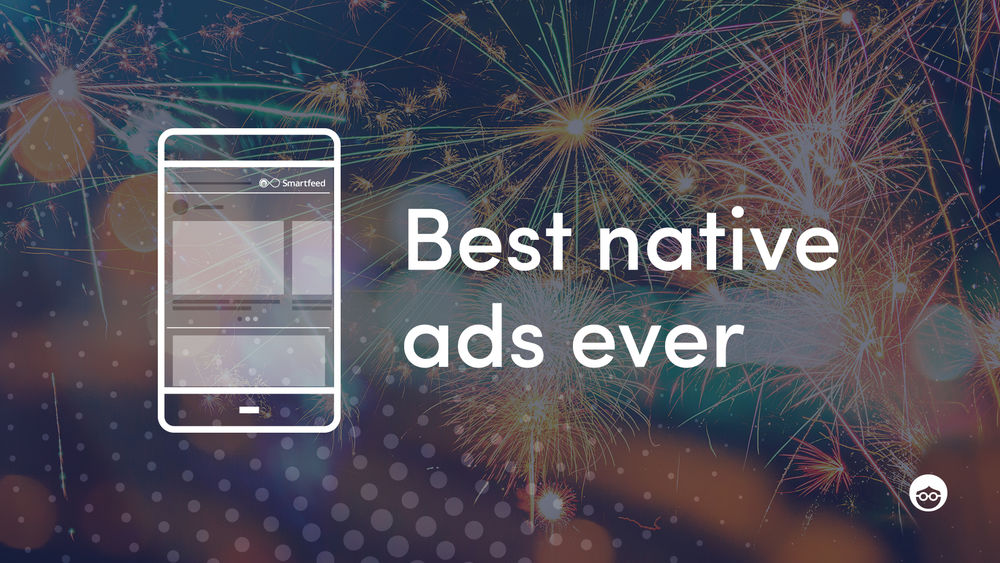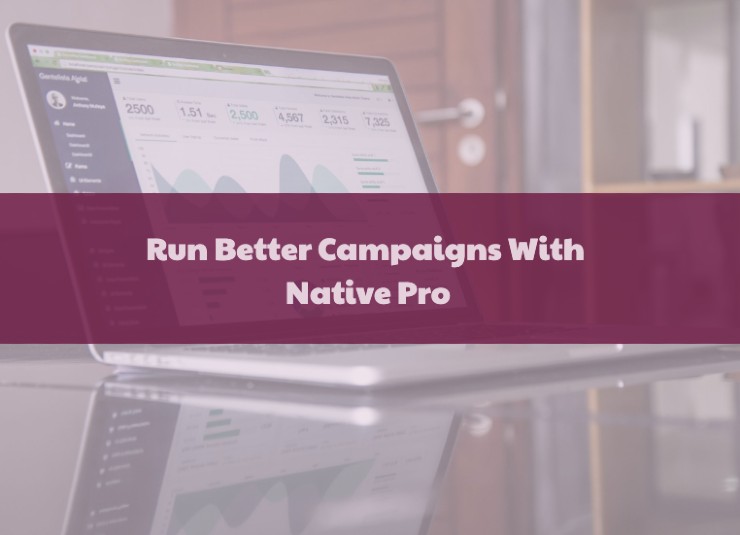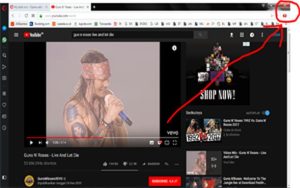If you’re looking to generate leads through online advertising, native ads may be the way to go. Native ads are a type of online advertising that blends in with the surrounding content on a website or app. They generally don’t interrupt the user’s experience and can actually be quite helpful.
Here are some tips on how to run native ads effectively. First, it’s important to understand your audience and what kind of messaging will resonate with them. If you’re not sure, consider conducting market research or A/B testing different ad copy and images.
Once you have a good understanding of your target market, you can move on to creating your ad campaign. Next, you’ll need to choose where to place your ads. There are a variety of websites and apps that offer native advertising space.
Do some research to find out which platforms would work best for reaching your target audience. Once you’ve selected a few potential placements, reach out to the relevant contact at each one and inquire about rates and availability. Finally, it’s time to create your actual ad units.
Again, consider what would appeal most to your target audience and make sure the copy and images are high quality. Once everything is ready to go, submit your ads for approval and wait for them to go live!
- Advertisers create native ads that match the look and feel of the publisher’s site
- Advertisers submit their native ads to publishers through an ad network or exchange
- Publishers review the native ads and decide which ones to run on their sites
- When a user visits a publisher’s site, the publisher’s ad server selects the native ad that will be shown to that user
- The selected native ad is delivered to the user’s browser along with the other content on the page
- The user sees the native ad and interacts with it just as they would with any other piece of content on the page
How To Do Native Advertising
How Much Does It Cost to Run Native Ads?
There is no one-size-fits-answer to this question, as the cost of running native ads will vary depending on a number of factors. These include the platform you are using to run your ad campaign, the targeting options you select, the creative elements of your ad, and so forth. That said, native advertising can be an effective and affordable way to reach your target audience.
One study found that native ads cost 50% less than traditional banner ads. Furthermore, native ads tend to have higher click-through rates than banner ads, making them more effective in terms of driving traffic to your website or landing page. To get an idea of how much it would cost to run a native ad campaign, consider using a tool like Native Advertising Calculator.
This tool takes into account a number of different factors and provides an estimate of how much you would need to spend based on your specific goals and objectives.
How Do I Target Native Ads?
There are a few things to consider when targeting native ads. The first is the format of the ad. Native ads come in many different formats, so it’s important to choose one that will fit well with your website or app design.
For example, if you have a lot of text on your site, a native ad that is mostly image-based may not be the best choice. Another thing to consider is the topic of your site or app. If you are targeting a specific niche audience, you’ll want to make sure the native ad is relevant to their interests.
Finally, you’ll also want to think about where the ad will be placed on your site or app. You’ll want to choose a spot that is highly visible and easy for users to find.
What is Native Advertising Example?
Native advertising is a type of online advertising that matches the form and function of the platform on which it appears. For example, an advertiser might pay to have its ad appear as a sponsored story in a social media feed or as a banner ad within an article on a news website. The key difference between native advertising and other forms of online advertising is that native ads are designed to blend in with their surroundings.
They don’t interrupt the user’s experience or call attention to themselves in an intrusive way. This makes native ads more effective than traditional banner ads, which are often ignored by users. It also means that native ads are less likely to be perceived as spam by users, which can make them more willing to engage with the ad.
Native advertising can take many different forms, but some common examples include: Sponsored posts on social media sites such as Facebook, Twitter, and Instagram Promoted tweets or hashtags on Twitter
Paid search results on Google and other search engines
What are Native Ads in Advertising?
Native advertising is a form of online advertising that matches the form and function of the platform on which it appears. In many cases, native ads are more effective than traditional banner ads because they don’t disrupt the user’s experience and they are more likely to be clicked on. Native ads can take many different forms, but they all have one thing in common: they blend in with their surroundings.
For example, a native ad on a social media platform might look like a regular post from a friend or brand, while a native ad on a news website might look like a normal article. The key to native advertising is creating ads that are relevant to the user and match the tone of the surrounding content. If done correctly, native ads can be an extremely effective way to reach your target audience.

Credit: www.outbrain.com
What is Native Ads
Native advertising is a type of online advertising that matches the form and function of the platform on which it appears. Native ads are often seen as less intrusive than banner ads because they don’t disrupt the user’s experience and are integrated into the flow of content. Native advertising can take many different forms, but all share one common goal: to blend in with the surrounding content so that they are not disruptive and more likely to be clicked on by users.
Some common examples of native advertising include: In-feed ads that appear within the content feed of a social media platform like Facebook or Twitter Sponsored posts on a blog or website Recommendation widgets that suggest similar articles or products based on what a user is currently viewing In-app ads that appear within mobile apps The key to creating successful native ads is to ensure that they are relevant and interesting to the audience you are targeting.
If your ad is not relevant, it will be ignored, no matter how well it is designed. Likewise, if your ad is not interesting, users will quickly scroll past it without giving it a second thought.
Native Ads Example
What are native ads? Native advertising is a form of online advertising that matches the form and function of the platform on which it appears. In many cases, native ads are designed to blend in with the surrounding content, making them less intrusive than other types of online advertising such as banner ads.
Why are native ads effective? One of the main reasons why native advertising is so effective is because it doesn’t interrupt the user’s experience like other forms of online advertising. Native ads are also more likely to be clicked on since they appear to be part of the surrounding content.
What are some examples of native ads? Some common examples of native advertising include sponsored posts on social media, promoted tweets on Twitter, and in-feed ads on websites.
Native Ads Google
Native advertising is a form of online advertising that matches the form and function of the platform on which it appears. Native ads Google take many different forms, but they all share one common goal: to blend in with the surrounding content so that they are not interruptive, and to provide a more seamless user experience. Google was one of the first companies to embrace native advertising, and they continue to be a leader in this space.
Their native ad products are some of the most popular and effective in the industry. There are several different types of native ads Google offers, each with its own strengths and best uses. In-feed ads appear within the content stream on a website or app, while in-article ads show up as recommended content after someone has finished reading an article.
Both types of ads can be extremely effective if done well. Another type of native ad is called a discovery ad, which appears on Google’s Discover feed (formerly Google Now). These ads are designed to be highly visual and attention-grabbing, making them ideal for brands that want to make a big impression.
Finally, there are Native Video Ads, which appear as suggested videos on YouTube (another Google property). These video ads can be extremely impactful when done right, but they need to be carefully planned and executed to avoid coming across as intrusive or annoying. Overall, native advertising is an excellent way to reach your target audience without being disruptive or intrusive.
If you’re looking for a way to get your message out there in a more organic way,native advertising is definitely worth considering!
Native Ads Vs Display Ads
The debate between native ads and display ads is one that has been around for a while. It’s a tough choice to make, as both have their pros and cons. Here’s a breakdown of each type of ad, to help you decide which is right for your business.
Display Ads: – Can be intrusive and disruptive to the user experience – Often ignored by users
– More expensive than native ads Native Ads: – Less intrusive and more seamless in the user experience
– More likely to be noticed and engaged with by users
Native Advertising Examples 2021
As we move into a new year, it’s important to keep up with the latest changes and trends in the world of advertising. One area that is constantly evolving is native advertising. Native advertising is a type of online advertising that blends in with the surrounding content on a website or app.
It can come in many forms, such as sponsored articles, videos, or even social media posts. As native advertising becomes more popular, it’s important to be aware of the different ways it can be used. Here are some examples of native advertising from 2021:
1. Sponsored Articles One common form of native advertising is sponsored articles. These are articles that are written by advertisers and then published on a website or app alongside other editorial content.
They usually include a link back to the advertiser’s website or product page. Sponsored articles can be an effective way to get your message across without being too intrusive. 2. Video Advertising
Another popular form of native advertising is video ads. These are short videos that play automatically when a user visits a website or opens an app. Video ads can be skippable, but they’re often designed to capture attention and hold it long enough for the viewer to get interested in what’s being advertised.
3. Social Media Posts Social media platforms like Facebook, Instagram, and Twitter have all introduced features that allow advertisers to place their ads directly within users’ feeds alongside organic content from friends and family members.
Is Native Advertising Considered Marketing
Yes, native advertising is considered marketing. It is a form of marketing that involves creating content that is relevant to the user and fits within the normal flow of the website or app. The goal of native advertising is to create a seamless experience for the user while still providing value for the advertiser.
Branded Native Ad
A native ad is an advertisement that is placed on a platform in a way that blends in with the other content on the site. This type of ad has become increasingly popular in recent years, as more and more people are using ad blockers and becoming immune to traditional banner ads. Native ads can take many different forms, but they all have one thing in common: they look like regular pieces of content from the site on which they appear.
For example, a native ad on a news website might look like a regular article, while on a social media site it might appear as a sponsored post or promoted tweet. The key to making a successful native ad is to make it relevant to the audience and context of the site where it will appear. It should also be visually appealing and well-written so that it stands out from the rest of the content on the page.
If you’re thinking about using native advertising to promote your business, keep these tips in mind to create ads that are effective and engaging.
Google Ad Manager
Google Ad Manager is a tool that helps businesses manage and optimize their Google Ads campaigns. It provides insights into how well your ads are performing, which can help you improve your campaign effectiveness. Additionally, Ad Manager allows you to create custom reports and export data for further analysis.
Conclusion
Assuming you want a summary of the blog post titled “How to Run Native Ads,” here are some key points: -Native advertising is a form of online advertising that is less intrusive than traditional banner ads and can be more effective in terms of engagement. -In order to run native ads, you need to first identify your target audience and then find native ad networks that serve that audience.
-Once you’ve found a few potential networks, you’ll need to create ad units that fit the format requirements of each network. -Finally, you’ll need to track your results and optimize your campaigns based on the data you collect.




